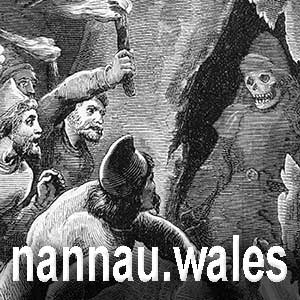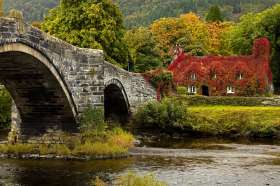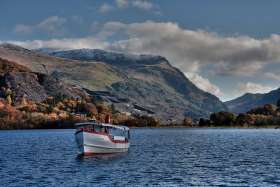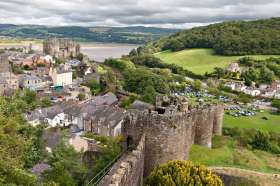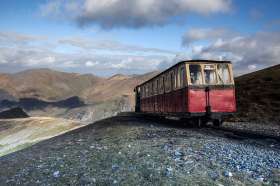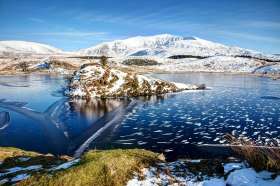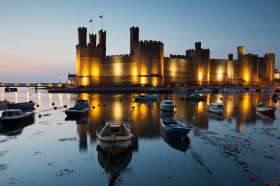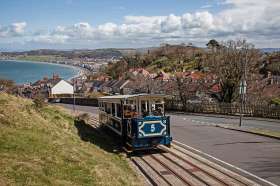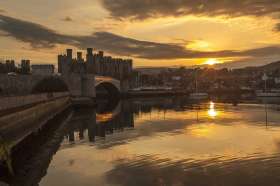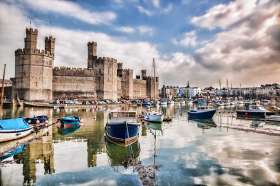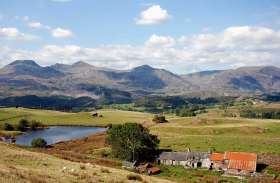
Llyn Tan y Graig & Cader Idris
Snowdonia
The Snowdonia National Park ("Parc Cenedlaethol Eryri" in Welsh) covers 823 square miles of North-West Wales. It is the largest and earliest of the three National Parks of Wales, being established in 1951 (the other two being "The Pembrokeshire Coast" and "The Brecon Beacons", both to the south). The half a million acres of the Park is home to over 26,000 people, spread across picturesque towns and villages including Dolgellau, Betws-y-Coed, Harlech and Beddgelert.
Snowdonia or "Eryri" ("Place of the Eagles" in Welsh) is home to the largest mountain in England and Wales, "Snowdon" ("Yr Wyddfa" in Welsh which means "Tumulus" or "Burial Mound"). The mountain is 1,085 metres (3,560 ft) high, although it isn't just one peak, but a series of five, separate by passes. There are many paths to the summit as well as the "Snowdon Mountain Railway", a 4.7 mile rack and pinion railway, opened in 1896, which takes passengers from Llanberis to the top. The summit also boats a new visitor centre, "Hafod Eryri", built in 2006.
The rocks that built Snowdonia were formed by volcanoes in the Ordovician period and much of the scenery was later carved out by Glaciation. While many come to walk to the summit of Snowdon, there are many other mountains to try, which are less crowded and without a train. These include "Cader Idris" ("Cadair Idris") and the "Rhinogs" ("Rhinogydd") to the south. While Cader Idris is 600 feet shorter than Snowdon, it's views are no less breathtaking, overlooking Cardigan Bay and towards Ireland. The Rock climbing also varies from novice to experienced. Edmund Hillary prepared for the 1953 ascent of Mount Everest on the cliff faces in Snowdonia.
Snowdonia or "Eryri" ("Place of the Eagles" in Welsh) is home to the largest mountain in England and Wales, "Snowdon" ("Yr Wyddfa" in Welsh which means "Tumulus" or "Burial Mound"). The mountain is 1,085 metres (3,560 ft) high, although it isn't just one peak, but a series of five, separate by passes. There are many paths to the summit as well as the "Snowdon Mountain Railway", a 4.7 mile rack and pinion railway, opened in 1896, which takes passengers from Llanberis to the top. The summit also boats a new visitor centre, "Hafod Eryri", built in 2006.
The rocks that built Snowdonia were formed by volcanoes in the Ordovician period and much of the scenery was later carved out by Glaciation. While many come to walk to the summit of Snowdon, there are many other mountains to try, which are less crowded and without a train. These include "Cader Idris" ("Cadair Idris") and the "Rhinogs" ("Rhinogydd") to the south. While Cader Idris is 600 feet shorter than Snowdon, it's views are no less breathtaking, overlooking Cardigan Bay and towards Ireland. The Rock climbing also varies from novice to experienced. Edmund Hillary prepared for the 1953 ascent of Mount Everest on the cliff faces in Snowdonia.
Dolgellau.Wales

